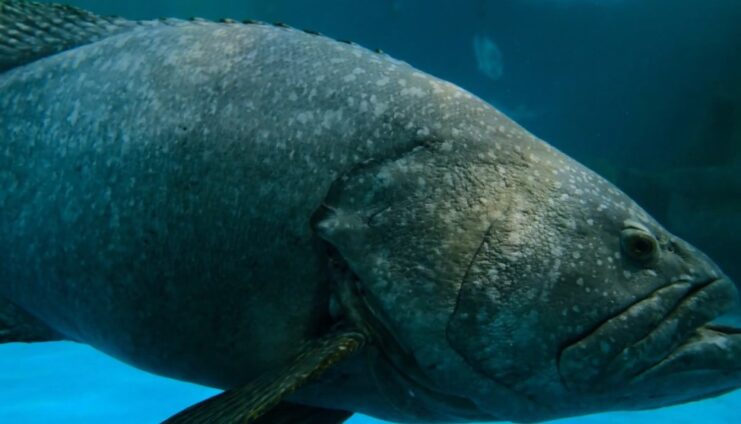Freshwater giants are some of the most fascinating creatures in the aquatic world. These massive fish not only capture our imagination with their sheer size but also play crucial roles in their respective ecosystems.
Understanding and conserving these remarkable species is vital for maintaining the health and biodiversity of freshwater habitats.
1. Beluga Sturgeon
The Beluga Sturgeon (Huso huso) is one of the largest freshwater fish species in the world, residing primarily in the basins of the Black Sea and the Caspian Sea.
Unfortunately, their population is critically endangered due to overfishing and habitat destruction.
- Habitat: Black Sea, Caspian Sea
- Size: Up to 24 feet long, over 3,500 pounds
- Lifespan: Up to 100 years
- Conservation status: Critically endangered
- Unique facts: Produces highly prized caviar
Beluga Sturgeons are known for their valuable caviar, which is one of the most sought-after delicacies in the world.
This has led to extensive poaching, further threatening their survival. Conservation efforts focus on habitat protection and sustainable fishing practices to ensure that future generations can witness these magnificent fish.
2. Mekong Giant Catfish
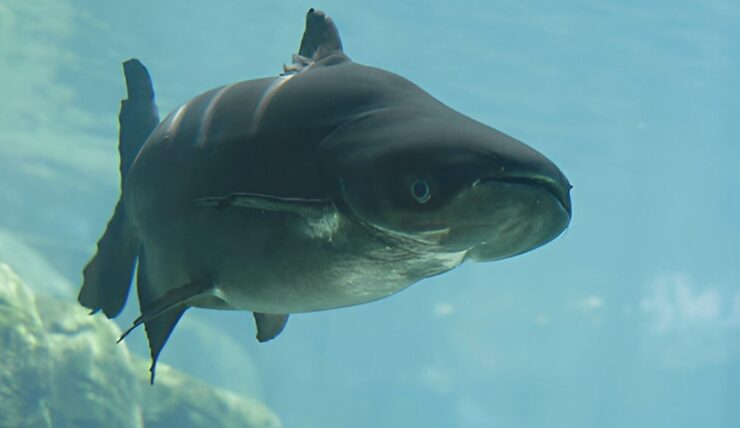
The Mekong Giant Catfish (Pangasianodon gigas) is a colossal freshwater fish found in the Mekong River of Southeast Asia.
They are critically endangered due to overfishing, dam construction, and pollution.
- Habitat: Mekong River, Southeast Asia
- Size: Up to 10 feet long, over 650 pounds
- Lifespan: Up to 60 years
- Conservation status: Critically endangered
- Unique facts: Remarkably fast growth rate
The Mekong Giant Catfish is renowned for its rapid growth rate, making it one of the fastest-growing fish species.
Efforts to conserve this species include establishing protected areas, regulating fishing, and raising awareness about the ecological significance of this giant catfish.
3. Alligator Gar
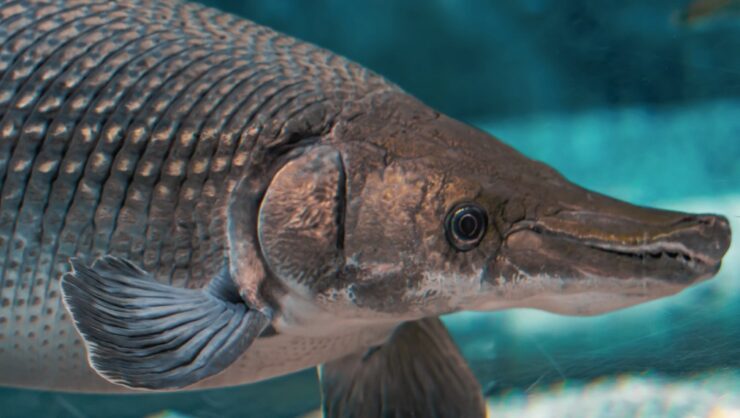
The Alligator Gar (Atractosteus spatula) is a prehistoric-looking fish native to the Mississippi River basin and Gulf Coast states.
Unlike many other large freshwater fish, the Alligator Gar is not endangered.
- Habitat: Mississippi River basin, Gulf Coast states
- Size: Up to 10 feet long, 350 pounds
- Lifespan: Up to 50 years
- Conservation status: Not endangered
- Unique facts: Has a dual row of large teeth and a snout like an alligator
The Alligator Gar’s appearance is striking, with a snout resembling that of an alligator and a body covered in armored scales.
This species plays a vital role in its ecosystem by controlling the population of smaller fish. Conservation efforts ensure that their habitat remains healthy and that their populations are monitored.
4. Arapaima
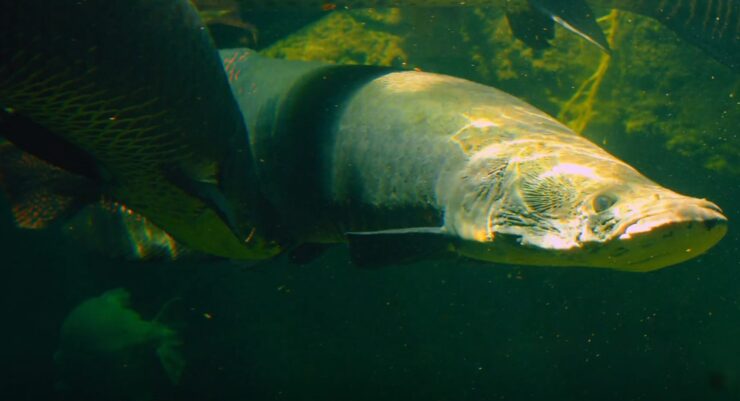
The Arapaima (Arapaima gigas), also known as the pirarucu, is one of the largest freshwater fish in the Amazon River basin in South America.
Arapaimas are considered living fossils, having remained relatively unchanged for millions of years, and are popular in world’s biggest aquariums.
- Habitat: Amazon River basin, South America
- Size: Up to 10 feet long, 330 pounds
- Lifespan: Ancient species
- Conservation status: Overfished, living fossils
- Unique facts: Capable of breathing air and surviving outside water for 24 hours
Arapaimas have a unique adaptation that allows them to breathe air, which helps them survive in oxygen-poor waters.
Unfortunately, overfishing has severely impacted their populations. Conservation measures include creating sustainable fishing practices and protecting their natural habitats to ensure the survival of this ancient species.
5. Giant Freshwater Stingray
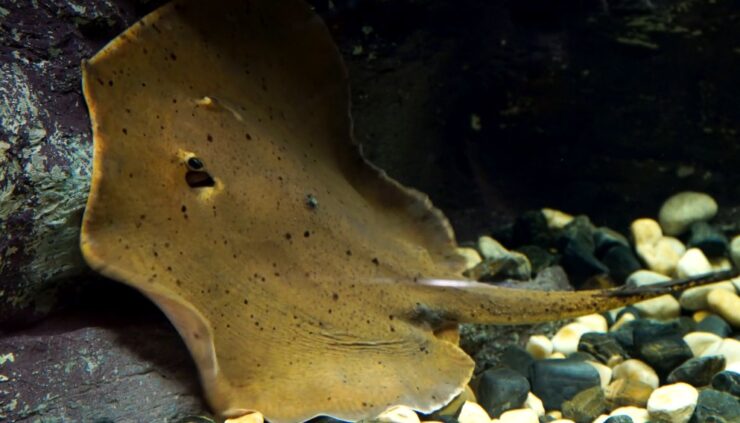
The Giant Freshwater Stingray (Himantura polylepis) is an extraordinary species found in the rivers of Southeast Asia.
They are endangered due to habitat loss and overfishing.
- Habitat: Rivers in Southeast Asia
- Size: Up to 15 feet across, over 1,300 pounds
- Conservation status: Endangered
- Unique facts: Has a venomous barb capable of piercing bone
Giant Freshwater Stingrays have a potent venomous barb that can cause serious injuries to humans and other animals.
Their large size and unique characteristics make them a subject of fascination and concern. Conservation efforts focus on habitat preservation and reducing fishing pressures to protect these majestic creatures.
6. Paddlefish
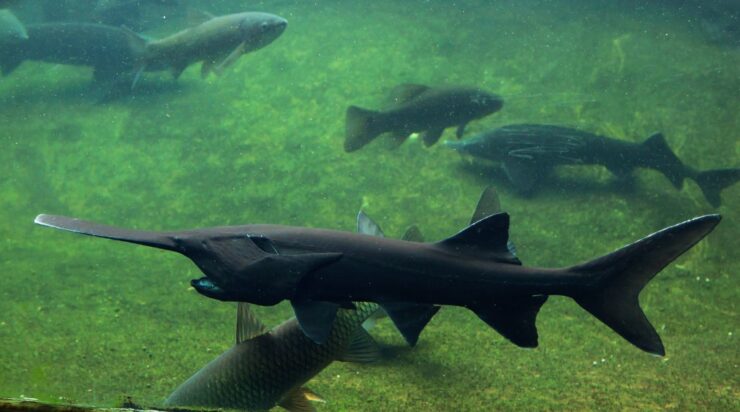
The Paddlefish (Polyodon spathula) is a distinctive fish recognized by its long, paddle-shaped snout.
- Habitat: Mississippi River basin, Yangtze River
- Size: Up to 10 feet long (Chinese species)
- Lifespan: Up to 30 years
- Conservation status: Chinese species critically endangered, American species vulnerable
- Unique facts: Recognizable by their paddle-shaped snouts
Paddlefish use their elongated snouts to detect plankton, which they filter from the water. The Chinese species of paddlefish is critically endangered due to overfishing and habitat fragmentation. Conservation actions include habitat restoration and protection to help revive their populations.
7. Giant Barb
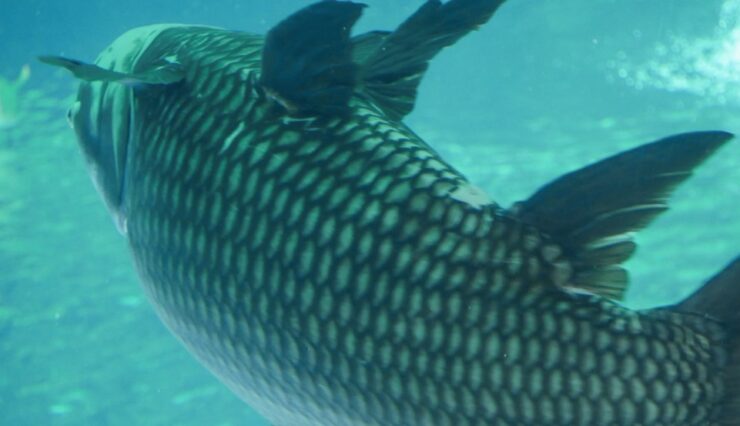
The Giant Barb (Catlocarpio siamensis), also known as the King of Fish, inhabits the waters of Southeast Asia.
- Habitat: Southeast Asia
- Size: Up to 10 feet long
- Lifespan: Not specified
- Conservation status: Critically endangered
- Unique facts: Known as the King of Fish, prefers eating algae and phytoplankton
Giant Barbs primarily feed on algae and phytoplankton, playing a significant role in their ecosystem by maintaining water quality.
Conservation strategies include creating protected areas and promoting sustainable fishing practices to safeguard their future.
8. White Sturgeon
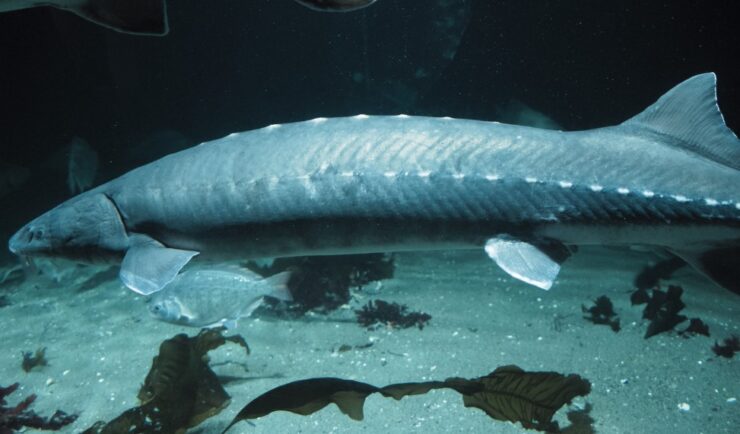
The White Sturgeon (Acipenser transmontanus) is a colossal fish found along the West Coast of North America.
They are considered a species of special concern in California.
- Habitat: West Coast of North America
- Size: Up to 20 feet long, nearly one ton
- Lifespan: 80 to 100 years
- Conservation status: Species of Special Concern in California
- Unique facts: Has not changed in appearance for 175 million years
White Sturgeons are ancient fish that have remained unchanged for millions of years. They play a critical role in their ecosystem as apex predators and scavengers.
Conservation efforts aim to protect their habitats and regulate fishing to prevent further population declines.
9. Nile Perch
The Nile Perch (Lates niloticus) is a large predatory fish native to the tropical rivers and lakes of Africa.
These fish can grow up to 6 feet long and have had significant ecological impacts, especially in non-native areas where they are considered invasive.
- Habitat: Tropical rivers and lakes of Africa
- Size: Up to 6 feet long
- Lifespan: Not specified
- Conservation status: Not endangered but considered an invasive species in non-native areas
- Unique facts: Has driven many native species to extinction in introduced areas
Nile Perch are known for their voracious appetite and ability to outcompete native species, leading to significant biodiversity losses.
Conservation efforts in regions where they are invasive focus on controlling their populations and protecting native species.
10. Siberian Taimen
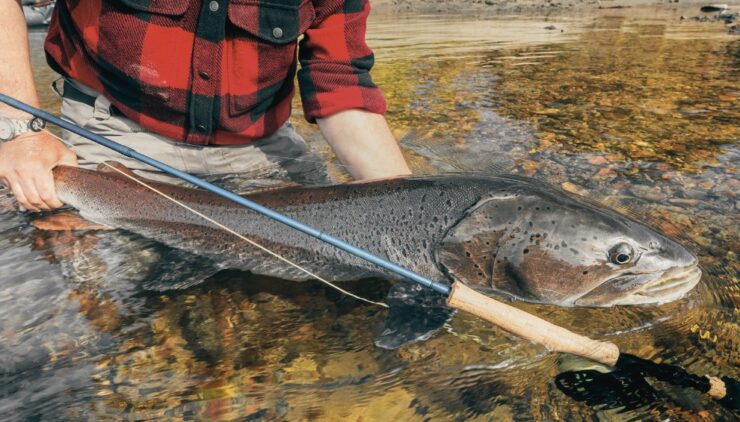
The Siberian Taimen (Hucho taimen) is a formidable freshwater predator found in the rivers and lakes of Russia, Mongolia, and Central Asia.
- Habitat: Freshwater rivers and lakes in Russia, Mongolia, Central Asia
- Size: Up to 6 feet long
- Lifespan: Long-lived, slow-growing
- Conservation status: Vulnerable
- Unique facts: Aggressive predator feeding on fish, rodents, and birds
Siberian Taimen are top predators in their habitats, feeding on a variety of prey, including fish, rodents, and birds.
Their populations are vulnerable due to overfishing and habitat destruction. Conservation measures include habitat protection and sustainable fishing regulations to ensure their survival.
Summary
The giant freshwater fish discussed here are not only awe-inspiring but also vital to their ecosystems.
Protecting these species through conservation efforts is essential to maintaining the health and biodiversity of freshwater habitats for future generations.

